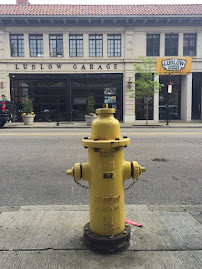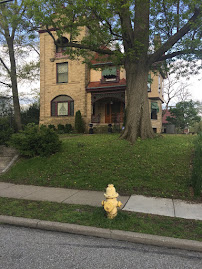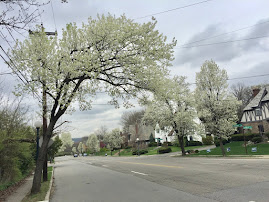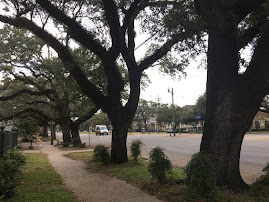
Dear George,
Years ago J and I used to play doubles with an acquaintance named Tom who lived next to the Digby tennis courts and is an English prof at UC. I ran across him as I was exiting the Clifton Public Library a while back, and he scolded me in no uncertain terms for checking out a movie on DVD instead of a good book. He touched a sore nerve since I’m a regular movie watcher and my leisure book-reading has declined to virtually nothing. Tom was very emotional about the topic, and I wondered if, being an author himself, he was just hanging out there confronting non-book borrowers all day long. I decided Tom’s machinations were a little excessive. After all, with the dominant presence of the University of Cincinnati and Hebrew Union College in the neighborhood, Clifton is unquestionably the intellectual center of the region, populated by faculty, grad students, and well-educated professionals – i.e., scads of book readers. If Tom wants to promote book-reading, he’d be better off going out to the suburbs and doing his proselytizing there.
I had the chance to confirm these impressions the other day when the Cincinnati Enquirer ran a front page article titled, “Video or book? Library has both.” The writeup included a table which reported last year’s circulation frequencies of books, videos (including DVD’s), and other items for all 41 branch libraries in Hamilton County. Much to my surprise, wealthy suburban Anderson Township ranked very high, with 65% of checked out items being books. Aren’t those Anderson dwellers too busy drinking cocktails and swimming in their pools to read? Other affluent suburbs were comparably high in book reading: Mariemont, 64%; Loveland, 64%; Wyoming, 61%; Blue Ash, 58%. Clifton’s main competitor for prestige in the city, of course, is Hyde Park, the bastion of Cincinnati’s old wealth and elegant life styles. At Hyde Park 63% of circulated items were books. Not better than the burbs, but not worse.
We are snobbish about our East Side of Cincinnati being culturally refined while West Siders are stereotyped as eating brats, drinking beer, and watching TV. Books, though, outweighed videos on the West Side: Covedale, 62%; Westwood, 55%; Delhi Township, 59%. Traditionally blue collar communities did drop down a bit: Bond Hill, 47%, Madisonville, 43%, Reading, 43%, Norwood, 42%. The West End, the poorest African-American neighborhood in the inner city, was toward the low end at 40%.
I deliberately put off looking at the Clifton Library till last. Could our book checkout rate possibly be as high as 90%. Well, maybe not that high. 80% would be a more realistic (still definitely higher than Hyde Park). You can imagine my surprise to discover that Clifton library patrons check out substantially more videos than books (a piddling 39%). Our beloved library ranks near the bottom in relative book usage (38th out of the 41 libraries in the Metro area). No wonder Tom stationed himself at the Clifton Library door. We are a pace-setter of sorts, but it turns out we are leading the charge by retreating from print media.
I struggled to make sense of this. For myself, I’ve long thought that I read all day long at work, and, when I get home, I want something lighter. Maybe my University colleagues are the same. Other times, I decide that books are an out-moded thing of the past and that movies represent the aesthetic wave of the future. However, that reasoning seems forced, even to me. Given the data at hand, I decided that Tom is on the right track, and we need some changes around here. I’m not going to go so far as haranguing people on Ludlow Avenue. But I am going to the Clifton Library first thing tomorrow to check out a book. I think I’m going to start with Dave Barry.
Love,
Dave
































































































































































